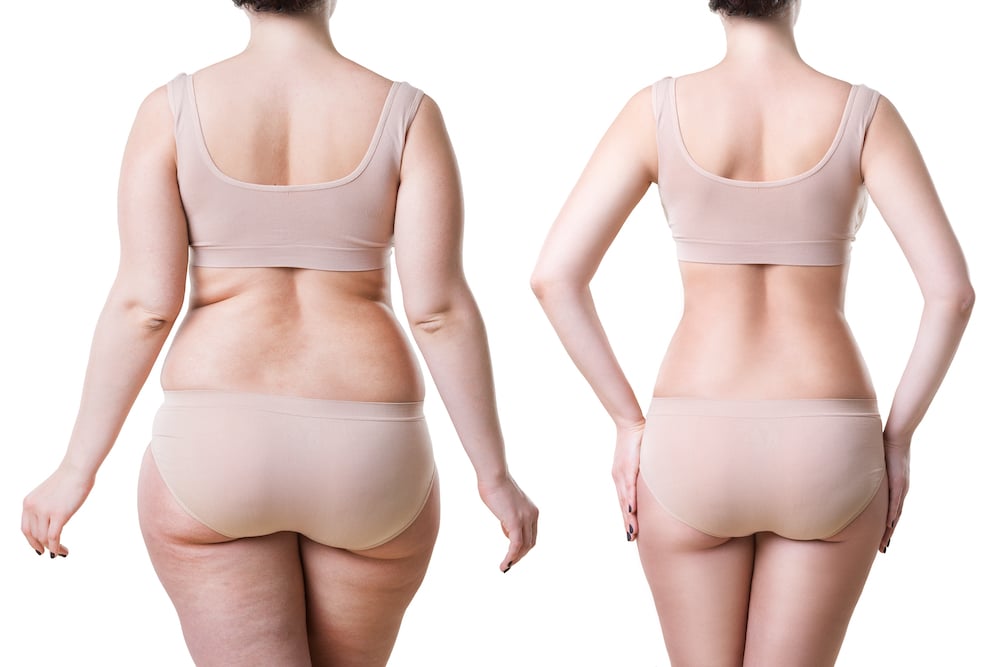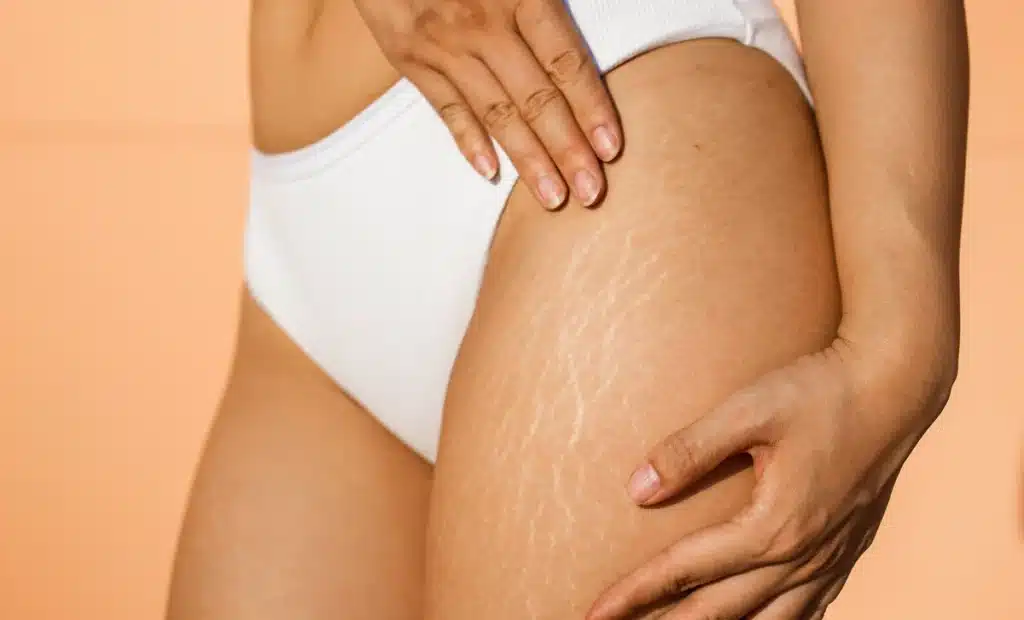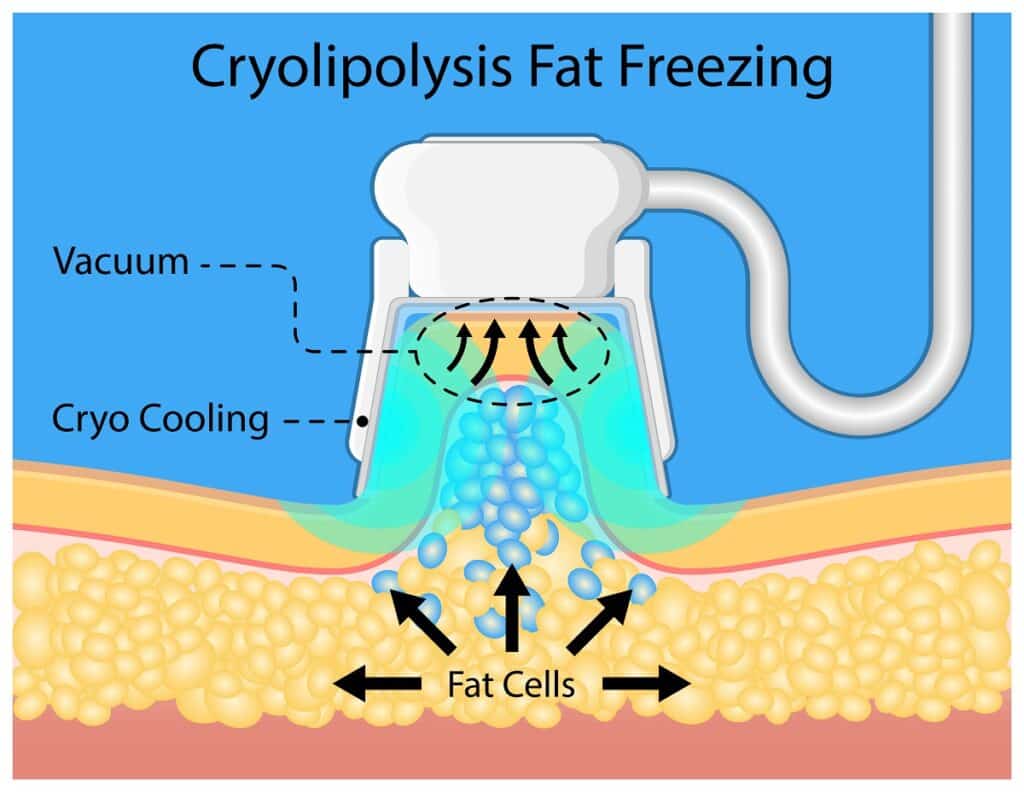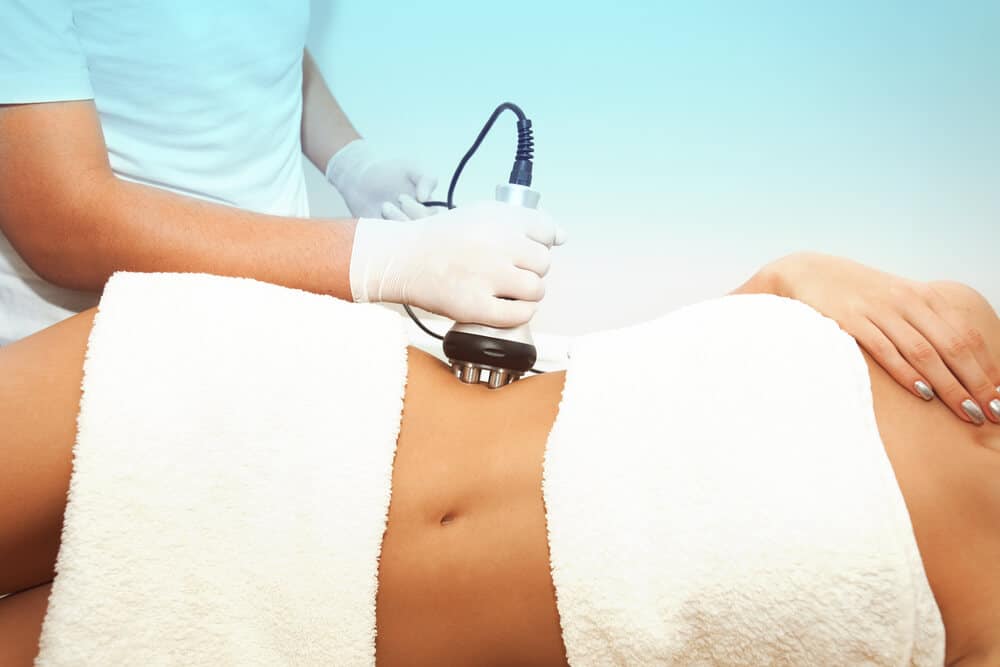Ever wondered how to achieve that perfectly sculpted look? The buttocks contouring procedure is your answer. This transformative buttocks surgery enhances the shape and fullness of your behind, giving you a confidence boost through body improvement. Whether you’re looking to correct asymmetry or simply want a more defined silhouette, cosmetic surgeons and skin reconstruction have got you covered.
Stick around to learn how this popular cosmetic treatment, including fat graft, can help you achieve your aesthetic goals safely and effectively. Ready to transform your look?
Understanding Buttocks Contouring
Definition
Buttocks contouring is a surgical procedure. It aims to improve the shape and appearance of the buttocks, as performed by a cosmetic surgeon. Surgeons use various techniques to achieve the desired look. These techniques include liposuction, implants, and fat grafting.
Common Reasons
Many individuals seek buttocks contouring for different reasons. Sagging is one common reason. This can occur due to aging or weight loss. Lack of volume is another reason. Some people are dissatisfied with their natural shape. They want a fuller, more rounded appearance.
Weight Fluctuations
Weight fluctuations impact the decision to undergo contouring. Significant weight loss can lead to excess skin. This causes sagging in the buttock area. Weight gain can also affect the shape. It may create an uneven or disproportionate look.
Aging Factors
Aging plays a significant role in buttocks contouring decisions. As people age, skin loses elasticity. This results in sagging and wrinkles. The muscles in the buttocks may also weaken over time, according to a cosmetic surgeon. These changes make many people consider a cosmetic surgeon for surgery to restore a youthful appearance.
Genetic Influence
Genetic factors influence buttocks shape and size. Some individuals have naturally flat or small buttocks. Others may have an asymmetrical shape. Genetics determine how fat is distributed in the body. This affects overall appearance and satisfaction.
Benefits and Advantages
Enhanced Shape
Buttocks contouring can enhance the shape of the buttocks. This procedure helps in sculpting a more defined appearance. Many people experience an increase in volume and a better overall shape, according to a cosmetic surgeon. The enhancement is noticeable immediately after the procedure.
Patients often report feeling more confident. They appreciate the improved look and feel of their bodies. The results are usually long-lasting, making it a popular choice for many.
Proportionate Silhouette
Achieving a more proportionate body silhouette is another benefit. Buttocks contouring helps balance the body’s proportions. It can make the waist appear smaller and hips more rounded.
This change can have a significant impact on one’s overall appearance. People often find that their clothes fit better. The procedure can also help align body proportions, leading to a more harmonious look.
Psychological Benefits
Improved body image leads to psychological benefits. Many individuals report increased self-esteem post-procedure. Feeling better about one’s body can significantly affect mental health.
People may feel more comfortable in social situations. They might also engage in activities they previously avoided. The boost in confidence can be life-changing for many.
Fat Reduction
Buttocks contouring often involves fat reduction. Excess fat is removed from areas where it’s unwanted. This can lead to a loss of several pounds, contributing to weight management goals.
Patients might see a reduction in extra skin as well. The procedure tightens the skin around the treated area, enhancing the overall result. Fat reduction makes the buttocks appear firmer and more toned.
Quick Procedure
The contouring process is relatively quick. Most procedures take about 60 to 90 minutes to complete. This makes it convenient for those with busy schedules.
Recovery time is also short compared to other surgeries. Patients can often return to normal activities within a few days. The minimal downtime is a significant advantage for many people.
Long-Lasting Results
Results from buttocks contouring are typically long-lasting. Maintenance requires a healthy lifestyle but no frequent touch-ups are needed.
Patients enjoy their enhanced appearance for years. The durability of results makes this procedure appealing to many seeking lasting changes.
Butt Lift vs Contouring
Objectives
A butt lift aims to remove sagging skin and tighten the area. This procedure is ideal for those with significant skin laxity. It does not add volume but improves the shape by eliminating excess skin.
In contrast, buttocks contouring focuses on reshaping and adding volume. This can involve fat transfer or implants. The goal is to create a fuller, more rounded appearance.
Techniques
Buttock lift surgery involves making incisions to remove excess skin. The surgeon then lifts and tightens the remaining skin. This technique is effective for those who have lost a lot of weight or have aging skin.
Buttocks contouring may use fat transfer, where fat from another part of the body is injected into the buttocks. Another method is using implants to add volume. These techniques enhance the natural shape and size of the buttocks.
Addressing Issues
A butt lift primarily addresses sagging and loose skin. It does not significantly change the volume of the buttocks. This makes it suitable for individuals with skin laxity due to aging or weight loss.
Contouring procedures can address multiple issues like cellulite and limited body fat in specific areas. By adding volume, these procedures can create a more youthful and balanced look.
Suitability
A butt lift is best for individuals with loose, sagging skin. Those who have undergone significant weight loss often benefit from this procedure. It helps tighten and smooth out the area.
Buttocks contouring suits people looking to enhance their buttock’s shape and size. Individuals with flat or asymmetrical buttocks often choose this option. It is also suitable for those with enough body fat for a fat transfer.
Aesthetic Goals
For someone aiming to improve overall body contours without adding bulk, a butt lift is ideal. It provides a lifted, firmer appearance without increasing size.
On the other hand, contouring procedures are perfect for those wanting a more pronounced enhancement. Adding volume through fat transfer or implants achieves a fuller look.
Real-Life Examples
Consider a person who has lost 100 pounds through diet and exercise but has sagging skin around their buttocks. A butt lift would be an appropriate choice for them as it removes excess skin and tightens the area.
Another example is someone with naturally flat buttocks who desires a fuller look. Buttocks contouring with a dermal fat flap or implants would help achieve their aesthetic goals.
Preparing for Surgery
Medical Evaluations
Before undergoing buttocks contouring surgery, patients must complete several medical evaluations. These assessments ensure that individuals are fit for the procedure. A cosmetic surgeon will likely request a full medical history. Blood tests and imaging studies may also be necessary.
Patients should disclose any medications they are taking. Allergies or previous surgeries should be mentioned as well. This information helps the surgeon plan the surgery safely.
Lifestyle Adjustments
Lifestyle changes play a crucial role in preparing for cosmetic surgery procedures. Patients should aim to quit smoking at least six weeks before surgery. Smoking can impair healing and increase surgical risks.
Maintaining a healthy diet is also important. Proper nutrition supports the body’s ability to recover post-surgery. Regular exercise can improve overall health and stamina, making recovery smoother.
Discussing Expectations
It’s essential to have a detailed discussion with the cosmetic surgeon about expectations and potential outcomes. Patients should express their desired results clearly. Surgeons can provide realistic insights into what can be achieved.
Understanding the limitations and risks of aesthetic plastic surgery is vital. Surgeons will explain possible complications and how they plan to address them. This conversation builds trust and sets realistic expectations.
Arranging Post-Surgery Support
Post-surgery support is crucial for a smooth recovery. Patients should arrange for someone to drive them home after the procedure. Having someone stay with them for at least 24 hours post-surgery is advisable.
Planning for time off work is also necessary. Recovery from surgical treatment like buttocks contouring usually requires at least two weeks off work. More extensive procedures might need longer recovery times.
Preparing Your Home
Preparing the home environment can make recovery more comfortable. Stock up on essential supplies such as medications, bandages, and comfortable clothing. Arrange a resting area with pillows to support the body properly.
Ensure that frequently used items are easily accessible. This setup minimizes movement during the initial recovery phase, reducing discomfort and promoting healing.
Final Steps
By following these steps, patients can prepare effectively for their buttocks contouring surgery:
- Complete all required medical evaluations.
- Make necessary lifestyle adjustments.
- Discuss expectations and outcomes with the surgeon.
- Arrange post-surgery support.
- Prepare your home for a comfortable recovery.
Proper preparation enhances safety and improves overall outcomes in cosmetic procedures.
The Procedure Steps
Anesthesia
The first step is administering anesthesia. Most patients receive general anesthesia. This ensures they are asleep and pain-free during the cosmetic procedure. Some may opt for local anesthesia with sedation. The choice depends on the patient’s health and preferences.
Incision Placement
Surgeons make incisions in specific areas. For fat transfer, small incisions are made for liposuction. If implants are used, incisions are larger. The location of these cuts varies based on the technique and patient’s body type. Surgeons plan incision sites to minimize visible scars.
Liposuction
Liposuction removes excess fat from targeted areas. Surgeons use a thin tube called a cannula. They insert it through small incisions. The cannula breaks up and suctions out unwanted fat cells. This step shapes the body and provides fat for transfer if needed.
Fat Transfer
In fat transfer procedures, surgeons purify the removed fat. They then inject it into the buttocks. This adds volume and enhances shape. The amount of fat transferred depends on the desired results. Surgeons carefully distribute the fat to ensure even contouring.
Implant Placement
Implant placement involves inserting silicone implants into the buttocks. Surgeons create pockets within muscle or above it. They place the implants into these pockets. This method is chosen when patients lack enough body fat for transfer. Implants come in various sizes to match patient goals.
Closing Incisions
After shaping the buttocks, surgeons close the incisions. They use sutures or surgical glue. Proper closure is crucial to reduce scarring and promote healing. Surgeons may place drainage tubes to prevent fluid buildup.
Customized Approach
Each procedure is tailored to the patient’s needs. Surgeons consider factors like body type and aesthetic goals. For example, a person seeking subtle enhancement might prefer fat transfer over implants. Those wanting significant change might choose implants or a combination approach.
Recovery Process
Post-surgery care is vital for recovery. Patients often wear compression garments to reduce swelling. Resting and following aftercare instructions speeds up healing. Most can resume normal activities within a few weeks.
Risks and Complications
Common Risks
Buttocks contouring carries several risks. Infection is a primary concern. It can occur if the surgical site isn’t kept clean. Symptoms include redness and fever. Antibiotics often treat infections, but severe cases may need further surgery.
Asymmetry is another risk. This means one buttock looks different from the other. It might happen if fat or implants are unevenly distributed. Corrective surgery can fix asymmetry, but it’s an additional procedure.
Anesthesia complications can also arise. These include allergic reactions or breathing problems. An anesthesiologist monitors the patient to reduce these risks.

Skin Issues
Skin issues are common after buttocks contouring. Superficial irregularities can appear. These are small lumps or bumps on the skin’s surface. They often result from uneven fat distribution or poor healing.
Wrinkles and many wrinkles can also form. This happens if the skin lacks elasticity. Older patients or those with damaged skin are more prone to this problem.
Poor tissue elasticity is a significant factor in skin issues. The skin may not bounce back well after surgery. This leads to sagging or wrinkled skin.
Iatrogenic Deformities
Iatrogenic deformities are deformities caused by medical treatment itself. In buttocks contouring, this could mean unintended changes in shape due to surgical errors. These deformities might need corrective procedures.
Importance of Qualified Surgeons
Choosing a qualified surgeon is crucial to minimize risks. A skilled surgeon has proper training and experience. They follow safety protocols to reduce complications.
Look for board-certified surgeons. Certification shows they meet high standards in their field. Check reviews and ask for before-and-after photos of previous patients.
A good surgeon will discuss all potential risks with you. They will explain how they plan to minimize those risks during the procedure.
Pre-Surgery Assessment
A thorough pre-surgery assessment is essential. This helps identify any potential health concerns that could complicate surgery.
Doctors will review your medical history. They will check for conditions like diabetes or heart disease that increase surgical risks.
You may need blood tests and imaging studies. These tests ensure you’re healthy enough for surgery.
Aftercare and Recovery
Initial Rest
Patients need to rest for the first few days. This period is crucial for healing. Swelling and bruising are common. Pain management is also important during this time.
Activity Restrictions
Avoid strenuous activities for at least two weeks. Light walking can help with blood circulation. Do not sit directly on the buttocks for long periods.
Wound Care
Keep the surgical site clean and dry. Change dressings as instructed by the surgeon. Watch for signs of infection, such as redness or discharge.
Follow-Up Visits
Attend all scheduled follow-up visits. Surgeons monitor healing progress during these appointments. They may adjust care instructions based on recovery status.
Adhering to Instructions
Follow all post-operative care guidelines carefully. Proper care ensures optimal results. Ignoring instructions can lead to complications.
Expected Results and Satisfaction
Gradual Results
Patients can expect gradual results from buttocks contouring. Initial swelling might hide the final look. Typically, swelling subsides over several weeks. As it reduces, the new shape becomes more visible. This process can sometimes take up to six months.
Skin sensation might change temporarily. Some patients report numbness or tingling in the treated area. These sensations usually resolve as healing progresses.
Satisfaction Rates
Satisfaction rates for buttocks contouring are generally high. Many patients feel more confident and pleased with their appearance. However, satisfaction varies based on individual expectations and outcomes.
Touch-up procedures may be necessary for some individuals. These adjustments ensure symmetry and desired results. It’s important to discuss potential touch-ups with your surgeon during initial consultations.
Long-term Maintenance
Long-term maintenance of buttocks contouring results is crucial. Lifestyle choices play a significant role in preserving the new shape. Regular exercise helps maintain muscle tone and skin elasticity.
Healthy eating habits support overall body health. Avoid significant weight fluctuations, which can affect the contouring results. Consistent weight management helps keep the buttocks looking firm and shapely.
Methods Impact
Different contouring methods impact results and satisfaction levels. Surgical options like Brazilian Butt Lift (BBL) use fat transfer techniques. This method often provides natural-looking results but requires careful aftercare.
Non-surgical methods involve fillers or radiofrequency treatments. These offer less dramatic changes but require fewer recovery times. Patients should choose the method that aligns with their goals and lifestyle.
Who Should Consider Contouring
Ideal Candidate
People seeking buttocks contouring often want to improve shape, volume, or symmetry. They may feel self-conscious about their appearance. Ideal candidates are those in good health with a stable weight. They should have realistic expectations about the results.
Individuals who have lost significant weight might notice sagging skin. This procedure can help tighten and lift the area. People with uneven buttocks can also benefit from contouring. It aims to create a balanced look.
Health Considerations
Certain health conditions make this procedure risky. Those with heart problems or blood clotting disorders should avoid it. Diabetes patients need careful assessment due to healing issues.
People with infections or skin conditions in the buttocks area should not proceed until fully healed. Consulting a doctor is crucial for anyone considering this surgery.
Unrealistic Expectations
e individuals might expect too much from the procedure. It’s important to understand that contouring will enhance but not perfect the body. Unrealistic goals lead to disappointment.
Surgeons stress the importance of having a clear, achievable vision. Communication with a plastic surgeon helps set these expectations.
Consultation Importance
A certified plastic surgeon evaluates if you are a suitable candidate. During consultation, they will discuss goals and health status. They will examine skin texture and overall physical condition.
The surgeon will explain the procedure details and potential risks. This helps in making an informed decision. They will also provide pre- and post-operative care instructions for optimal results.
Summary
Buttocks contouring can transform your confidence and appearance. From understanding the procedure to knowing the benefits, you’re now equipped with essential knowledge. The detailed steps and aftercare tips ensure you’re prepared for the journey ahead.
Ready to enhance your silhouette? Consult with a certified surgeon to discuss your goals. Your dream look is within reach—embrace this opportunity for a more confident you. Explore our recommended specialists today!
Frequently Asked Questions
What is buttocks contouring?
Buttocks contouring is a cosmetic procedure to enhance the shape and size of the buttocks. It involves fat transfer or implants.
What are the benefits of buttocks contouring?
The benefits include improved body proportions, enhanced curves, and boosted self-confidence.
How does butt lift differ from buttocks contouring?
A butt lift removes excess skin and tightens tissues, while contouring focuses on reshaping using fat transfer or implants.
How should I prepare for a buttocks contouring procedure?
Preparation includes medical evaluations, avoiding certain medications, and stopping smoking. Follow your surgeon’s instructions closely.
What are the steps involved in the procedure?
The procedure involves anesthesia, making incisions, fat grafting or implant placement, and closing incisions. It typically lasts 2-3 hours.
What are the risks of buttocks contouring?
Risks include infection, scarring, asymmetry, and anesthesia complications. Consult with a board-certified surgeon to minimize risks.
What is the recovery process like?
Recovery involves rest, wearing compression garments, avoiding strenuous activities, and following post-op care instructions. Full recovery takes a few weeks.












